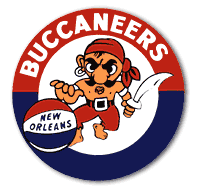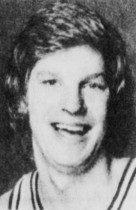
The Denver Nuggets are an American professional basketball team based in Denver. The Nuggets compete in the National Basketball Association (NBA) as a member of the league's Western Conference Northwest Division. The team was founded as the Denver Larks in 1967 as a charter franchise of the American Basketball Association (ABA), but changed their name to Rockets before the first season. The Rockets then changed their name again to the Nuggets in 1974. After the name change, the Nuggets played for the final ABA Championship title in 1976, losing to the New York Nets.

The Memphis Grizzlies are an American professional basketball team based in Memphis, Tennessee. The Grizzlies compete in the National Basketball Association (NBA) as a member of the league's Western Conference Southwest Division. The Grizzlies play their home games at FedExForum. The team is owned by Robert Pera. The Grizzlies are currently the only team in the major professional North American sports leagues based in the city of Memphis, and the only professional basketball team in the state of Tennessee.
The Baltimore Claws were an American basketball team which was supposed to appear in the 1975–76 season in the American Basketball Association. The team collapsed before the season started, playing only three exhibition games, all losses, in its brief history.

The Kentucky Colonels were a member of the American Basketball Association for all of the league's nine years. The name is derived from the historic Kentucky colonels. The Colonels won the most games and had the highest winning percentage of any franchise in the league's history, but the team did not join the NBA in the 1976 ABA–NBA merger. The downtown Louisville Convention Center was the Colonels' original venue for the first three seasons before moving to Freedom Hall for the remaining seasons, beginning with the 1970–71 schedule.

The New Orleans Buccaneers were a charter member of the American Basketball Association. After three seasons in New Orleans, Louisiana the franchise moved to Memphis, Tennessee, where it became the Pros, Tams and Sounds for four years before an abortive move to Baltimore in 1975.

Mid-South Coliseum is an indoor arena in Memphis, Tennessee. The facility was opened in 1964, and became known “The Entertainment Capitol of the Mid-South” due its significance in hosting events such as concerts, sports games and professional wrestling shows. The Coliseum closed in 2006. In the late 2010s, efforts emerged to help preserve and refurbish the arena as part of a larger redevelopment of the surrounding area.
Loyola Field House was an indoor arena in New Orleans, Louisiana. It hosted the ABA's New Orleans Buccaneers for two seasons, and the NBA's New Orleans Jazz (1974–1975). It was also the home venue for Loyola Wolf Pack basketball. The arena held 6,500 people.

Carl John Neumann, nicknamed "Johnny Reb", was an American professional basketball player and coach. At 6'6" and 200 pounds, he played at the shooting guard and small forward positions.
The 1973–74 Kentucky Colonels season was their seventh in the American Basketball Association. The Colonels finished in second place in the ABA's Eastern Division. They met the Carolina Cougars in the Eastern Division Semifinals and swept them in 4 games. They met the eventual champion New York Nets in the Eastern Division Finals, where they lost. McCarthy was let go after this season.
The 2001–02 NBA season was the Grizzlies’ 7th season in the National Basketball Association, and their first season in Memphis. After six years of struggling in Vancouver, the Grizzlies relocated to Memphis, Tennessee. Although it was the first NBA team for the city, Memphis played home to an American Basketball Association team known as the Memphis Sounds from 1970–1975. The Grizzlies had the sixth overall pick in the 2001 NBA draft, and selected small forward Shane Battier from Duke University. During the off-season, the team acquired top draft pick and Spanish basketball star Pau Gasol, point guard Brevin Knight and former University of Memphis star Lorenzen Wright from the Atlanta Hawks, acquired point guard Jason Williams, and veteran shooting guard Nick Anderson from the Sacramento Kings, and signed free agent Rodney Buford. However, center Bryant Reeves missed the entire season due to a preseason back injury, and never played for the team in Memphis during the regular season.
The 1975–76 American Basketball Association season saw the demise of the Baltimore Claws franchise.
Mark "Mike" Storen Jr. was an American sports executive in basketball, baseball, and football. After graduating from the University of Notre Dame and a stint in the US Marines, he began his career with the Chicago Zephyrs and became their promotions director after their move to Baltimore. He subsequently served as the first general manager of the Indiana Pacers from 1967 to 1969, before assuming the positions of GM and part-owner of the Kentucky Colonels. He became the commissioner of the American Basketball Association (ABA) in 1973, and played an instrumental role in the league's merger with the National Basketball Association (NBA) three years later.

The ABA-NBA merger was a major pro sports business maneuver in 1976 when the American Basketball Association (ABA) combined with the National Basketball Association (NBA), after multiple attempts over several years. The NBA and ABA had entered merger talks as early as 1970, but an antitrust suit filed by the head of the NBA players union, Robertson v. National Basketball Ass'n, blocked the merger until 1976.
Lee Davis is a retired basketball player who played for eight seasons in the American Basketball Association (ABA). A center and forward during his career, he played for five different ABA teams.
The 1972–73 ABA season was the sixth season of the American Basketball Association. The Pittsburgh Condors and Miami Floridians had folded, leaving the league with nine teams. However, the ABA decided to award an expansion franchise to Dr. Leonard Bloom for $1 million to play in San Diego, California, named the San Diego Conquistadors. Subsequently, this meant that the Memphis Tams would move to the Eastern Division. Once again, the best regular season team did not win the ABA Finals, with the Indiana Pacers, led by playoff MVP George McGinnis, winning the ABA championship, 4 games to 3 over the Kentucky Colonels.
Ronnie Robinson was an American basketball player.
The 1974–75 Memphis Sounds season was the fifth and final season of basketball in Memphis in the American Basketball Association (ABA). Charles O. Finley had failed in running the Tams, and he let the league take the team from his reigns after two years. In July 1974, a group led by Isaac Hayes, Avron Fogelman, Kemmonis Wilson, and former ABA Commissioner Mike Storen took the team over. The team was renamed to Sounds, and players were soon dealt to and away from Memphis. The March 28, 1975 game saw 8,417 see a victory over the New York Nets 111–106, the largest crowd to see the Sounds in years. The team improved by six games, and in part due to a weak division took the final playoff spot by 12 games over Virginia, the first time Memphis had made a playoff series since 1971. In the Semifinals, they lost to Kentucky in 5 games. Wilson and Hayes had to share their shares after the season ended due to losing money on the team. Afterwards, the league gave Memphis until June 1, 1975, to sell 4,000 season tickets, find new investors, and secure a more favorable lease at the Mid-South Coliseum, but the deadline passed with failure. On August 27, 1975, a group headed by David Cohan purchased the team and the franchise moved to Baltimore, to become the Baltimore Claws. However, the team never played a regular season game.
The 1973–74 Memphis Tams season was the 2nd and final season of the Tams and 4th overall season of American Basketball Association basketball in Memphis. After the previous season had mercifully ended, doubt was put into if the Tams would stay in Memphis, as the phone lines and team office were closed. Charlie Finley tried to sell the team, with a Rhode Island group in discussion with Finley, but nothing came of it, with Finley subsequently dealing with a heart ailment for most of the summer, which rose a problem for the ABA, particularly with making schedules for the teams. The league's attempts to reach Finley came in late August, with the schedules for the league being released on August 25 - just over a month before the season was due to start. The Tams hired Butch Van Breda Kolff to coach on September 11, two days before the Tams' first pre-season game. The team floundered, losing 63 games. They finished 9th in points scored per game, at 101.2, while finishing 8th in points allowed at 108.2 per game. At one point in the season, they lost 13 straight games, with a 12-game losing streak occurring later in the year. Their best winning streak was 2, which they did four times. After the season, the league took over operations of the team. On July 17, 1974, Mike Storen, Issac Hayes, Avron Fogelman, and Kemmonis Wilson bought the team, rebranding the team as the Memphis Sounds.
The 1972–73 Memphis Tams season was the 1st season of the Tams and 3rd overall season of American Basketball Association basketball in Memphis. After two seasons as the Memphis Pros with middling profits, Charles O. Finley bought the team on June 13, 1972. He proceeded to rebrand the team like his other teams that he had owned, changing the colors of the team to Kelly Green, California Gold, and Polar Bear White. The team's name was picked from an array of 20,000 postcards sent by fans, with the winner being given a $2,500 prize, which turned out to be Tams. Tams was meant to stand for the fans that resided in Tennessee, Arkansas, and Mississippi, with a tam-o-shanter hat being the main logo. In fact during the first ever game on October 12, 1972, the entire team came out wearing the hats. Finley also had a hand in the combinations of uniform colors worn, in part due to there every top and trunk being either green, gold, or white, with one notable combo being yellow tops with white trunks. For all of the flair the team had with uniforms, it did not translate into success on the court nor for attendance. By December, Finley tried to have negotiations to move the team to St. Paul, Minnesota, and Ron Franz was cut before Christmas. The Tams were 6th in points scored at 111.5 per game but were dead last in points allowed at 118.1 per game. They had two instances of 10 game losing streaks, with the Tams going a month between wins, losing 15 straight games from February 25 to March 24. By the time the streak ended, they had been eliminated from making the playoffs. They were the first team to lose 60 games since the Miami Floridians in 1969.
The 1971–72 Memphis Pros season was the 2nd and final season of the Pros in the American Basketball Association. By the middle of the season, they were 17–25. In the second half of the season, they went 9–33, with a 10-game losing streak from February 4 to February 23 being the lowlight. In fact, the team ended the season on a nine-game losing streak. The biggest winning streak was 3, which they accomplished three times in the season. The Pros were 10th in points scored with 107.5 points per game and 6th in points allowed with 113.0 points per game. On December 11, 1971, the operation of the franchise was taken over by the league. With the team struggling financially, they were sold on June 13, 1972, to Charles O. Finley, owner of the Oakland Athletics and the Oakland Seals. Soon after they were rebranded as the Memphis Tams, while playing at the same arena as the Pros. In their first season, they lost 60 games.








